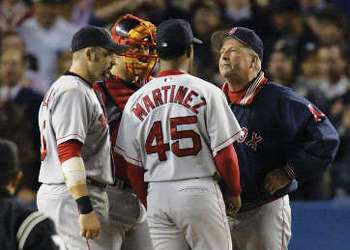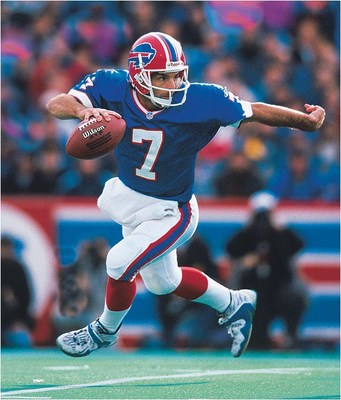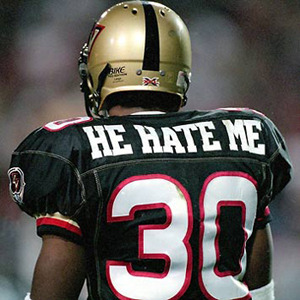The Tulsa Shock is not a good basketball team. Tulsa is 1-20 with no relief in sight. The team is a mess. A Chicago broadcaster called the Shock a “train wreck” earlier this season. Teresa Edwards, the interim coach, said herself that it might not get any better this season. She said it’s going to be a learning experience every time out. It’s a young roster without a superstar. I don’t blame the players, because I know they’re doing their best. I blame ownership and the WNBA for thinking a team could succeed here.
When it was announced that Tulsa was getting a WNBA team, I know I’m not the only person in town who thought, “Seriously? A WNBA team here?”
 |
| It can't surprise too many people that the Shock has struggled in its first two seasons in Tulsa. |
Like many people who follow sports in this area, I bit my tongue and decided not to rain on Tulsa’s parade, because the city was proud to get its first top-level pro sports team (as opposed to the Drillers and Oilers, who are minor league teams). I would have been fine with being wrong, but I didn’t like the Shock’s chances of finding success in Tulsa. I, along with several others, thought that this struggling league would find it tough succeed in the 61st biggest market in the country. The talk at the press conference about filling the BOK Center with 10,000 people a night raised my eyebrows. They get 5,000 on a good night.
Hope isn’t completely lost, but the Shock has to draft extremely well, because it will always be tough to draw top free agents to Tulsa. Getting a superstar like Diana Taurasi or Maya Moore to come to Tulsa as a free agent would be really, really difficult. When the team moved from Detroit, some of the top players refused to come to Tulsa, which contributed to the franchise's early struggles in the Sooner State. It may be a tad early to call the Shock a total failure, but the deck will always be stacked against this team because of the smaller market.
This got me to thinking: what are worst decisions in sports history? There have been several much worse than the Tulsa Shock. In constructing this list, I made one stipulation: take hindsight out of it. In other words, to make the list, millions of fans had to think it was a bad decision the day it was made, and we all turned out to be right.
If I used hindsight, decisions like the Raiders drafting JaMarcus Russell first overall, the Detroit Tigers trading a prospect named John Smoltz for Doyle Alexander, and the Trail Blazers taking Sam Bowie ahead of Michael Jordan would all make the list. Those decisions were not criticized half as much the day they were made as they were five or ten years later.
The decisions that made my list, however, instantly made people all over the country say, “I’ve got a bad feeling about this.”
 |
| Sticking with Pedro cost Grady Little his job in 2003. |
10. Grady Little sticks with Pedro Martinez
While Red Sox fans would vote for this as number one, it’s a tougher call for me as an objective fan. I’ll explain after I set the stage.
In Game 7 of the 2003 ALCS, Red Sox ace Pedro Martinez was mowing down Yankee hitters and had a 5-2 lead in the eighth inning. He had allowed just six hits while striking out eight through seven innings, and he got the leadoff batter in the eighth to pop out. The Sox were five outs away from their first World Series since 1986 and a chance to snap the legendary Curse of the Bambino. Martinez, though, was tiring. Derek Jeter doubled, then Bernie Williams singled in Jeter. It was 5-3.
Grady Little came out to talk to his ace while hard-throwing lefty Alan Embree was warming in the bullpen. Surprisingly, Little left Martinez in the game. After a Hideki Matsui double and a Jorge Posada two-run single, the game was tied. Three innings later, we know how it ended. The Yankees won the game, and Little was fired in the offseason.
Why is this a tough call for me? Pedro Martinez was one of the most dominant forces in the game. When Little walked off that mound, I was a little surprised, but I still thought Pedro was going to be the guy to get the Red Sox to the World Series. I thought, “Risky move, Little, but I don’t disagree.”
Those critical of the move at the time were quick to cite the pitch count. Even though statistics showed Martinez’s productivity dropped after 100 pitches, I subscribe to the old school theory that a pitcher should be judged on how he’s throwing and not what the pitch count is. I don’t fault Little for sticking with one of the most dominant pitchers in the game for one batter. I do, however, fault him for sticking with him for two. If the hits by Jeter and Williams weren’t enough clues to pull Martinez, the double by Matsui should have been the red flag. Pedro should have never faced Posada. That’s why Grady Little bats leadoff for me on this list of bad sports decisions.
 |
| Flutie led the Bills to 10 wins, but that wasn't enough for Phillips to start him in the playoffs. |
9. Wade Phillips goes with Rob Johnson over Doug Flutie
There was a quite a quarterback controversy in Buffalo in 1999: the promising youngster, Rob Johnson against the savvy veteran, Doug Flutie. Flutie won the job in training camp and led the Bills to a 10-5 record. Phillips rested Flutie in the meaningless regular season finale, when Johnson played and led the Bills to a 31-6 win. Phillips was impressed by Johnson and decided to start him in the Bills’ playoff game the following week against Tennessee. In other words, Phillips benched the man who had led the team to 10 wins in favor of the guy who lost the starting job and played well in the meaningless regular season finale. Flutie was completely healthy, but was going to watch the playoff game after leading Buffalo to 10 of its 11 wins.
While it did take the famous Music City Miracle for the Titans to pull out the win, the Bills did lose the game without Flutie. While many Bills fans would have rather seen Flutie start the game, they never really blamed that loss on Johnson, but they did pin the next two seasons on him. Phillips stuck with Johnson again in the 2000 season, when the Bills struggled to an 8-8 finish, with half of those wins coming at the hands of Flutie while Johnson was injured (Flutie went 4-1 with the Bills in 2000). Phillips was fired after the 2000 season, Flutie left as a free agent, and Johnson struggled again in 2001 before losing the starting job to Alex Van Pelt. The Bills have yet to return to the playoffs. While Johnson may have been a “miracle” away from making Phillips look like a genius, the miracle still happened and the Bills still lost. The difference between genius and insanity is measured only by success. In the end, Phillips picked the wrong guy, and everybody knew it.
 |
| Solo was openly critical of Ryan for benching her in 2007. |
8. Greg Ryan benches Hope Solo
In 2007, the U.S. women’s soccer team was heading into its World Cup semifinal match against Brazil on a 51-match undefeated streak, and goalkeeper Hope Solo was a rising star who had a large hand in that. Head coach Greg Ryan, though, decided to bench her against Brazil and instead go with the experienced Briana Scurry, who had led the United States to the 1999 World Cup, but had not played in three months. The U.S. lost 4-0.
Solo didn’t hold back. She criticized Ryan in interviews after the game. She said it was the wrong decision. She may have been out of line to say that publicly, but she wasn’t wrong. While there is no guarantee that Solo would have won the game, she couldn’t have done much worse. Ryan’s decision coupled with Solo’s outburst divided the team and ultimately led to his contract not being renewed. In five matches against Brazil since, Solo hasn’t lost and has given up a total of just two goals, both of which came this summer in the World Cup quarterfinal win.
7. The 1980 Ali-Holmes fight
Everyone involved in organizing this fight should have been arrested for cashing in at the expense of the well-being of an American legend. Fight promoters threw a lot of money at the retired yet proud 38-year old Muhammad Ali to fight Larry Holmes, the 30-year old champ. Ali had clearly slowed down after a long career. He was moving and speaking slower. Everyone in the Ali camp could see this, but they went ahead with the fight anyway. It’s not about the fact Ali lost, it’s about the health risks involved.
Holmes didn’t want to beat up his friend, but he had to because he obviously didn’t want to lose his title. Ali wouldn’t quit of course, and Holmes dominated the legend. He won every round easily. It was a sad sight: the greatest champion boxing had ever seen was taking the beating of his life. Everyone watching was just begging for it to stop, and it finally was after ten rounds. While it’s a little extreme to blame Ali’s later development of Parkinson’s disease on this beating, the punishment his brain and body took unquestionably furthered the damage he had already taken during his career.
6. Notre Dame hires Gerry Faust
Giving the most prestigious job in college sports (at the time, anyway) to a high school coach seemed like a risk. It was. Faust went 30-26-1 with the Irish, who became known for late-game and late-season collapses during his tenure. He became the first Notre Dame coach to lose to Air Force, and he did it four times. His career ended with a humiliating 58-7 loss to Jimmy Johnson’s Miami Hurricanes.
 |
| Yes. This happened. |
5. The White Sox wear shorts
Seriously. A Major League Baseball team wore shorts. In a game that involves sliding in dirt, the White Sox took the field in August of 1976 looking like they were about to play a pickup basketball game. The idea was that of then-owner Bill Veeck and his wife, Mary Frances. Their explanation: it gets hot the summer.
The shorts actually debuted for the first game of a doubleheader against Kansas City. Royals’ star John Mayberry famously said to one of the Sox players, “You guys are the sweetest team we’ve seen yet.”
Despite getting the win in game one, the Sox went back to wearing pants for game two. They wore shorts two more times that summer (mainly as publicity stunt for a struggling team), but never again.
4. The USFL sues the NFL, attempts to move to the fall
This decision was documented very well by the ESPN 30 for 30 film, Small Potatoes: Who Killed the USFL? From 1983 through 1985, the USFL was a very successful spring football league that had recruited several future NFL stars like Herschel Walker, Steve Young, Reggie White, and Jim Kelly to play in the league. While it wasn’t as popular as the NFL, it was close. It was a fun league that fans and players enjoyed.
 |
| The USFL was working until the owners, led by Trump, decided to sue the NFL and attempt to move to the fall. |
Donald Trump, the owner of the New Jersey Generals, wanted to expand. Always the aggressive businessman, Trump led the charge to move the league from the spring to the fall after the 1985 season. He also led an antitrust lawsuit against the NFL to help finance the league as it made the fall transition. The good news: the USFL won the suit. The bad news: they were awarded exactly one dollar in damages (it was later tripled to three dollars). Obviously, a buck was not enough to keep the league afloat. The owners were out of money, and they knew they couldn’t compete with the NFL. The league ceased operations in 1986 and never restarted.
3. Gene Mauch shuffles his rotation
The 1964 Philadelphia Phillies pulled off one the most epic collapses in sports history, blowing a six-and-a-half game lead with 12 games to go. It probably wouldn’t have happened, though, if their manager hadn’t gotten cute with their rotation.
Mauch, noted as a great baseball strategist, decided to start his two aces, Jim Bunning and Chris Short, a total of seven times over the last ten games. Six of those starts were on two days rest. The Phillies lost all of them. Philadelphia lost ten straight before salvaging the last two of the season. By then, the St. Louis Cardinals had overtaken them to win the pennant. Why Mauch decided to push his best pitchers when he had such a comfortable lead still boggles the mind. This catastrophic collapse is known in Philadelphia as “The Phold.”
Eighteen years later, Mauch clearly hadn’t learned from his mistake. Leading the Milwaukee Brewers two games to none in the best-of-five ALCS, Mauch started Tommy John and Bruce Kison on three days rest in Games 4 and 5 to become the first manager to lose an ALCS after leading 2-0.
While that collapse isn’t quite as bad as what happened in 1964, it does help to illustrate why Mauch is the winningest manager without a pennant. Phillies’ fans still can’t understand why he wore out his pitching staff to let that big lead slip away.
As my late grandfather, a big Phillies’ fan, once said about Mauch, “There goes the strategic genius who never won anything!”
My grandfather didn’t say “anything.” I censored that for my family-oriented blog.
 |
| This is everything you need to know about the XFL. |
2. The XFL
Vince McMahon’s ill-conceived idea to mix the game of football with the theatrics of professional wrestling was bad enough. However, he made the same mistake the USFL made: he tried to compete with the NFL. Instead of marketing his league as a supplement to the NFL, he marketed it as competition, and America never bought it. The players were predictably less talented, and the product was not half as good as Vince McMahon and Jesse Ventura talked it up to be. One Saturday night, NBC was forced to stick with an XFL game that went into overtime. This forced a much-anticipated episode of Saturday Night Live with Jennifer Lopez to be delayed. It was pretty clear that NBC was off the XFL bandwagon at that point. The product was lousy, and it was hurting NBC’s more popular shows. Although we can always thank the XFL for the laughs we got from He Hate Me, nobody was surprised when the league folded after one season.
 |
| What could have been in Boston. |
1. The Red Sox sell Babe Ruth to the Yankees
In the words of Lee Corso, this isn’t a second guess. It’s a first guess.
This isn’t about hindsight. It’s about having the dominant player in the game and selling him. Whatever financial issues Red Sox owner Harry Frazee may or may not have been having at the time, they clearly could have been cured by investing in a valuable asset like Ruth.
At the time the Boston sold Ruth to the Yankees, he was the most popular, most dominant player in the game. Ruth had just made the transition from pitcher to outfielder and had set what (at the time) was the single-season home run record at 29. Ruth was an established star in 1919 and was clearly on his way to becoming a legend.
No comments:
Post a Comment